Efficacy of intestinal optimizer pronutrients against a chemical coccidiostat in broilers
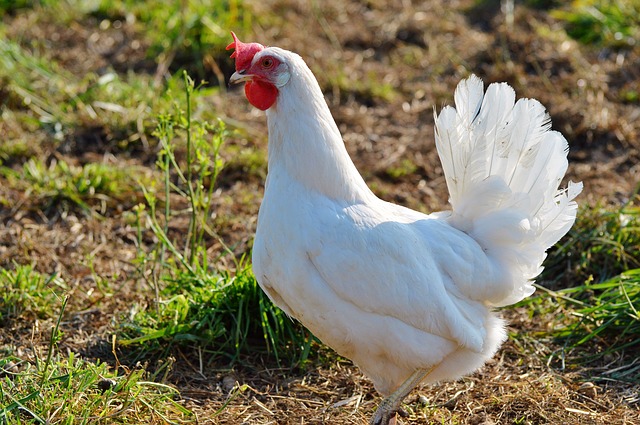
Introduction:
In a trial carried out by the BAU (Bangladesh Agricultural University) the efficacy of ALQUERNAT ZYCOX intestinal optimizer pronutrients, on the feed conversion rate (FCR) and growth in broiler chickens was studied, comparing its effectiveness with that of a chemical coccidiostat.
Material y methods:
A controlled and randomized trial was performed, using the double-blind technique. 1000 broilers of the Cobb 500 line were used for 35 days, divided into 3 different groups separately, but with the same environmental and management conditions; and the food and water supplied ad libitum:
Control group (n = 340) without coccidiostats in the food
Group with intestinal optimizer pronutrients (n = 330), at 0.5 kg/ton
Group with chemical coccidiostats (n = 330), at 0.5 kg/ton; (Maduramycin 0.8% + Nicarbazine 8.0%)
At 16 days of age, an artificial infection was induced with Eimeria tenella, with 2.5×104 oocysts/bird. Potassium dichromate (2.5%) was used for sporulation, and then the oocysts were isolated and identified.
Evaluated parameters:
Live weight and Feed Conversion Rate
Mortality
Clinical observation of the faeces, classifying them as follows:
o “±” Without or with little blood, no diarrhoea.
o “+” Some blood, greater proportion of affected broilers.
o “++” Bloody faeces with diarrhoea, most of broilers are infected.
o “+++” Faeces with blood and mucous, dark, dejection.
o “++++” Severe diarrhoea with blood, necrotic detritus of the caecum, prostration.
Clinical evaluation of cecal lesions
o Macroscopic: Classifying the injuries in 4 grades from 1 to 4:
- 1: Diffused petechiae in mucosal and serous surface. Some blood in the caecum. Dense caecal content.
- 2: Petechiae in mucosal and serous surface. Dense caecal content with blood or fibrin. Thickened wall, but with wrinkles.
- 3: Thickened caecal wall, wrinkles are not observed. Absence of caecal content, which has been replaced by blood or fibrin.
- 4: Distended caecum, with lumen full of blood or clots.
o Microscopic: Evaluation of histological lesions in 4 grades from 0 to 4 depending on the concentration of inflammatory cells per focus, damage to the villi and exudate in the lamina propria, and luminal accumulation.
Oocyst count per gram of faeces (in 5 birds per group using the Whitlock Universal film with 4 chambers)
Results: (Artificial infection at day 16 of life)
Average live weight g/bird
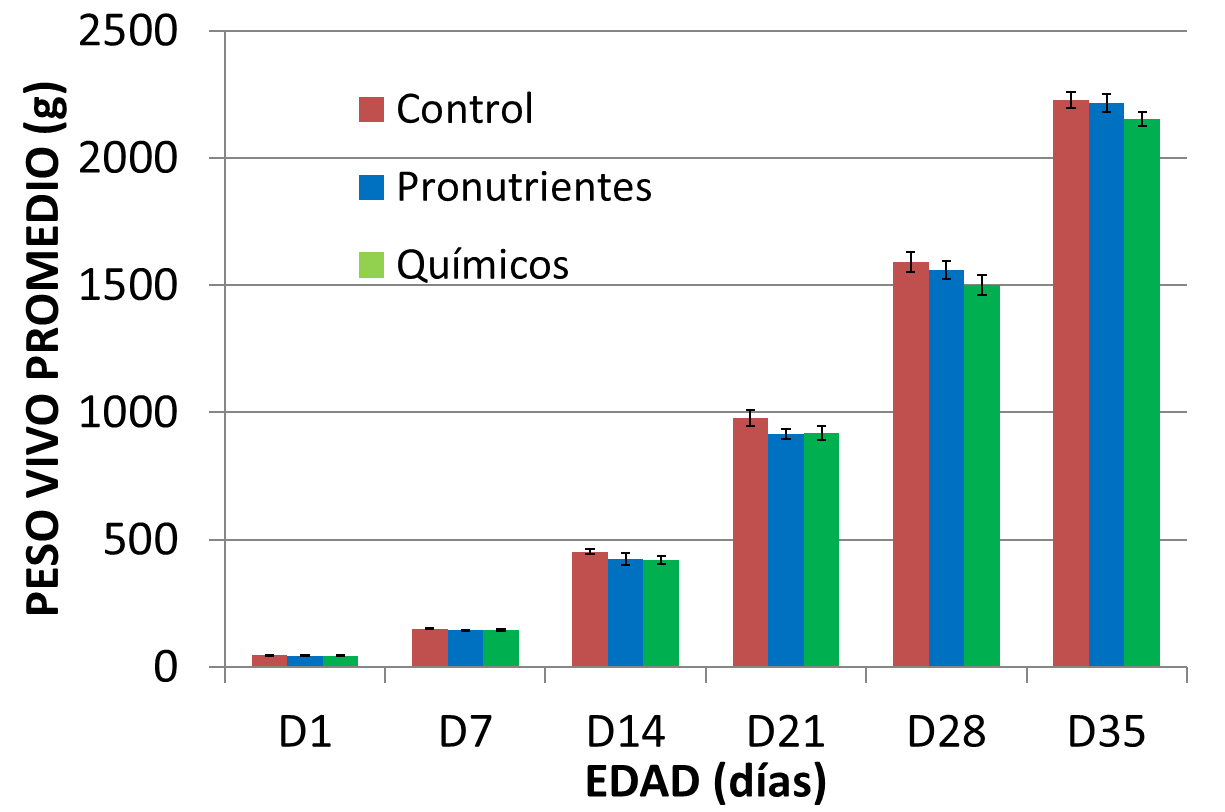
The average weight per bird at the end of the cycle was very similar between the control and the pronutrient treated groups, and lower in the group treated with a chemical coccidiostat.
Feed conversión rate


Feed conversion rate was lower in the group treated with pronutrients than in the group treated with a chemical coccidiostat, and this difference was even greater compared to the control.
Mortality %
Mortality was significantly lower in the group treated with pronutrients.

Evaluation of the faeces
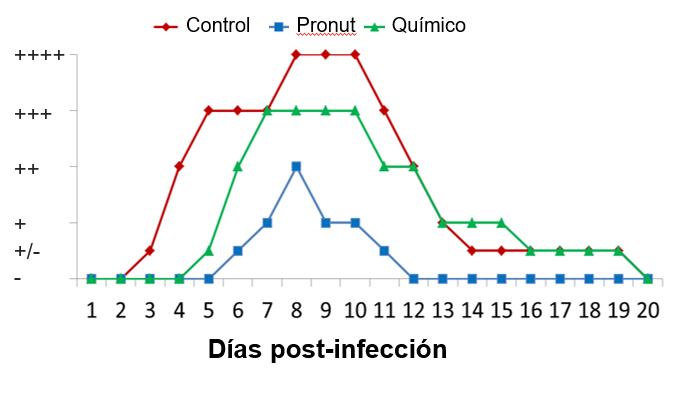
In post-infection days, the evolution of faeces in terms of affectation was markedly better in the group treated with pronutrients than in the group treated with chemical coccidiostats and in the control group.
Macroscopic cecal lesions
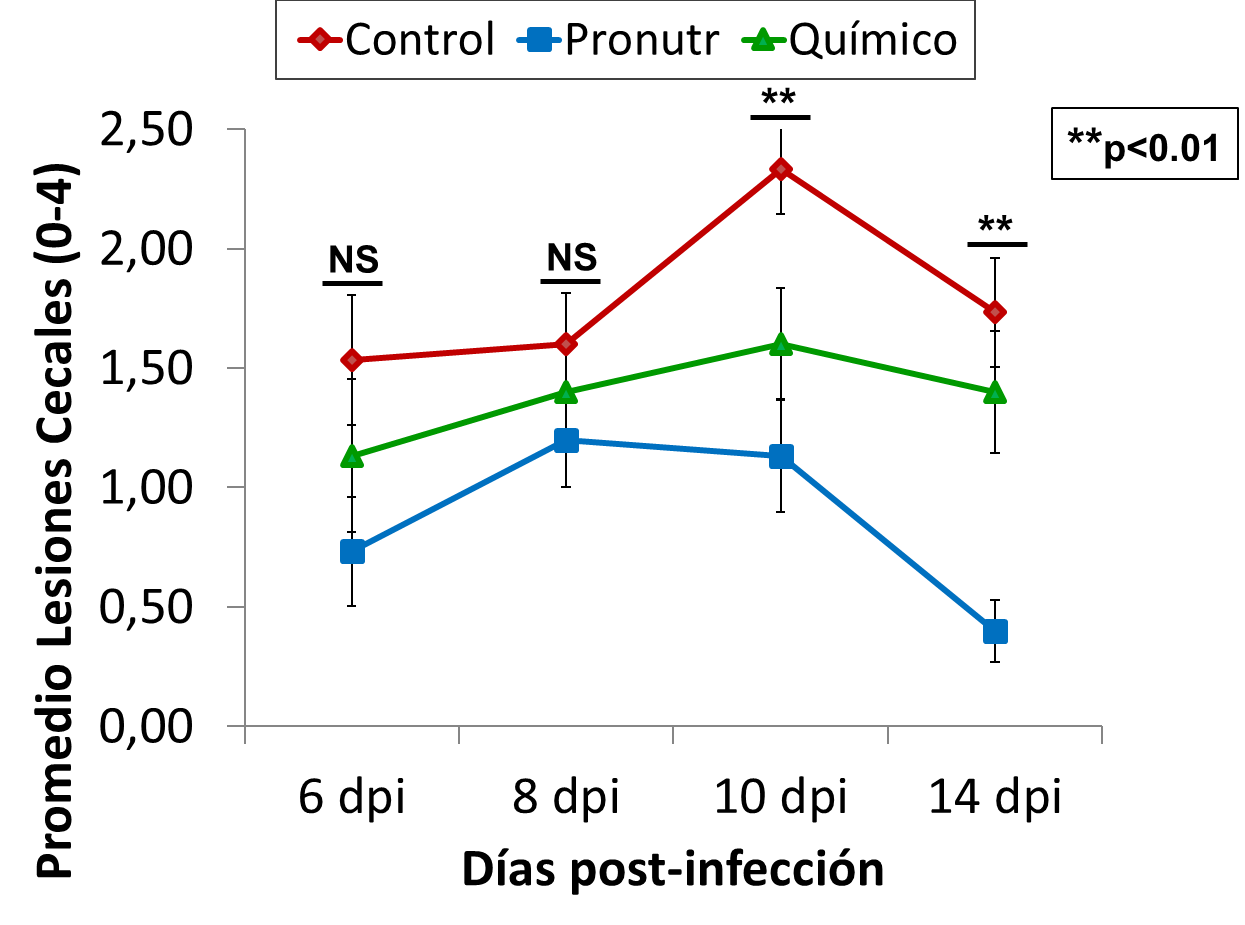
n post-infection days, the evolution of macroscopic cecal lesions was significantly better in the group treated with pronutrients.
Histopathological lesions

Histopathological lesions also showed a better evolution during the post-infection days in the group treated with pronutrients.
Oocyst count
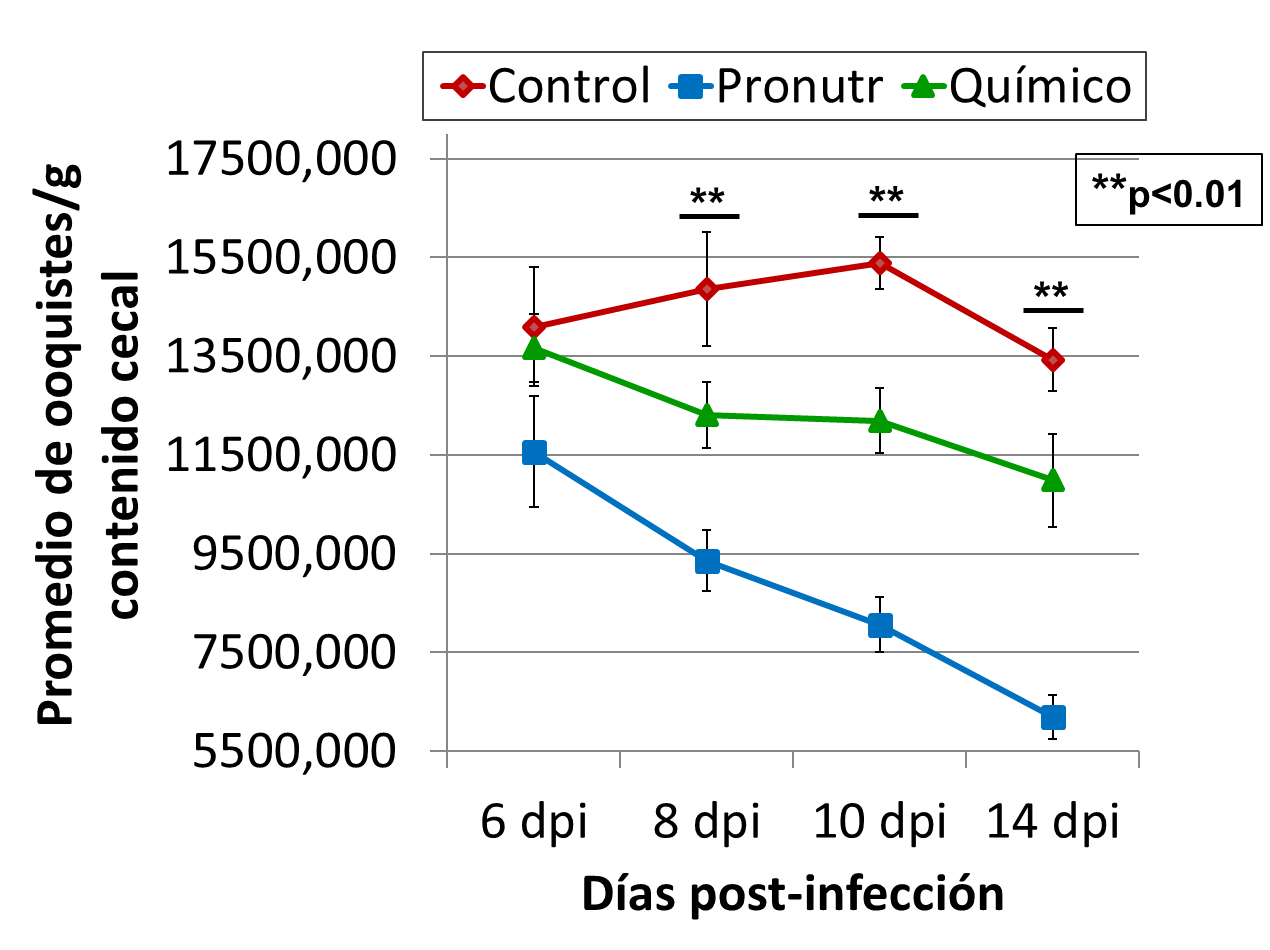
In the count of oocysts, a higher decrease was observed in the batch treated with pronutrients.
Final conclusions of the trial
ü Weight gain was similar in the control and pronutrient groups.
ü Feed conversion rate was similar in the group of pronutrients and in the group of chemical coccidiostats. In both groups, FCR was better than the control group.
ü Mortality was significantly lower in the group treated with pronutrients compared to the group with chemical coccidiostats and with control group.
ü The severity of cecal lesions was significantly lower in the group treated with pronutrients, compared with the other groups.
ü Histopathological lesions were also significantly lower in the batch treated with pronutrients, compared with the other groups.
ü The count of oocysts decreased significantly and markedly in the group treated with pronutrients from 6 days post-infection, compared with the other groups.
This product based on intestinal optimizer pronutrients is commercially available under the name “Alquernat Zycox”.
